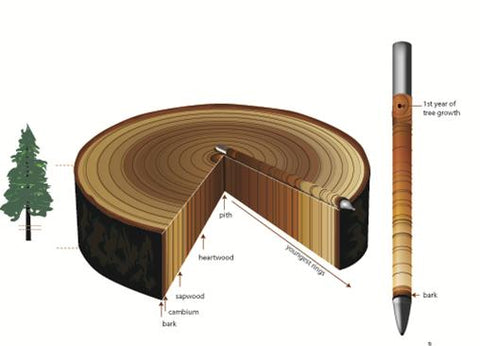What the 2025 Ledgstone
Champion will be wearing
Champion will be wearing

A tree grows from the center- each year adding another ring onto its stem. Tree ring records show the range of nature's conditions, for example temperature variations between summer and winter are responsible for the light and dark bands within a given annual ring. Large year-to-year fluctuations in precipitation, as is the case throughout much of the western U.S., cause narrow rings during and following dry periods and wider rings during or following wet years. The Tree Ring pens and watches are made using tree ring analysis techniques.
Tree ring science or dendrochronology includes the dating of annual rings and analyzing patterns, such as width, density, and chemical composition. Dendrochronology relies on the principle that tree growth proceeds only as fast as allowed by the most limiting factor. Throughout much of the semiarid western US, water limits tree growth. In a tree-ring series, abnormally wet and dry years will produce wide and narrow annual growth rings, respectively. For a given climatic region, tree-ring widths will share similar patterns of wide and narrow rings referred to as common variance. Cross-dating is a visual comparison of the common variance from numerous trees of the same climatic region. By chronologically ordering the wide and narrow rings of trees from a given climatic region, cross-dating assures that each tree ring is dated correctly to the calendar year of formation. Tree Ring Pens have all been dated using these scientific principles.
Learn more about dendrochronology at http://web.utk.edu/~grissino/
About Tree Ring Co
Its not just a watch, its a slice of Montana hisory